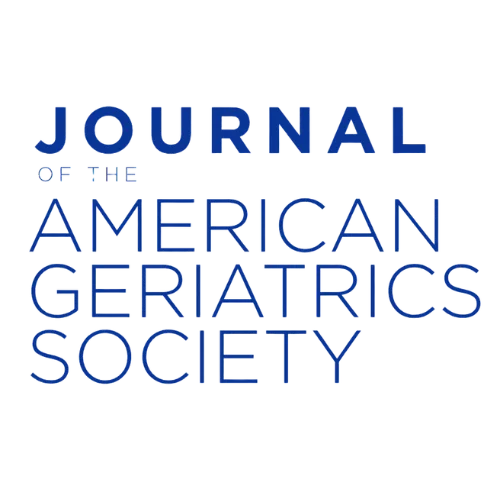PBJ research report and related news:

Severe neighborhood deprivation and nursing home staffing in the United States
Significant staffing disparities were observed within facilities located in severely deprived neighborhoods. Targeted interventions, including workforce recruitment and retention efforts, may be needed to improve staffing levels for nursing homes in deprived neighborhoods.
Falvey, Jason R., et al. “Severe Neighborhood Deprivation and Nursing Home Staffing in the United States.” Journal of the American Geriatrics Society, Wiley, Aug. 2022, https://doi.org/10.1111/jgs.17990.

Study finds staffing more challenging for nursing homes in socioeconomically deprived areas
Nursing homes in neighborhoods experiencing socioeconomic deprivation could find it challenging to sufficiently staff their facilities, according to a recent study published in the Journal of the American Geriatrics Society.
The cross-sectional study used 2018 daily payroll-based staffing records and address data for 12,609 nursing homes in the United States linked with resident assessment data. The purpose of the study was to assess the relationship between neighborhood socioeconomic deprivation and nursing home staffing in the United States.
“Significant staffing disparities were observed within facilities located in severely deprived neighborhoods. Targeted interventions, including workforce recruitment and retention efforts, may be needed to improve staffing levels for nursing homes in deprived neighborhoods,” wrote researchers Jason R. Falvey DPT, PhD; Erinn M. Hade, PhD; Steven Friedman, MS, and colleagues.
Gaivin, Kathleen Steele. “Staffing More Challenging for Nursing Homes in Socioeconomically Deprived Areas, Study Finds.” McKnight’s Senior Living, 13 Apr. 2023, www.mcknightsseniorliving.com/home/news/business-daily-news/staffing-more-challenging-for-nursing-homes-in-socioeconomically-deprived-areas-study-finds.

Study: Nursing Home Staffing in Disadvantaged Neighborhoods
Nursing home staffing in severely disadvantaged neighborhoods is significantly lower than staffing in more well-off neighborhoods, according to a new study in which the LTSS Center participated.
Nursing homes located in disadvantaged neighborhoods are staffed for fewer hours by clinical workers like registered nurses (RN) and physical therapists, compared with nursing homes in more well-off areas, according to new research published in the Journal of the American Geriatrics Society (JAGS).
This disparity could compromise the safety of residents, according to the article’s authors, including Robyn Stone, co-director of the LeadingAge LTSS Center @UMass Boston.
Magan, Geralyn. “Study: Nursing Home Staffing in Disadvantaged Neighborhoods.” The LeadingAge LTSS Center @UMass Boston, 26 Aug. 2022, www.ltsscenter.org/study-nursing-home-staffing-in-disadvantaged-neighborhoods.

Nursing Home Staffing Struggles Add to Health Disparity in Disadvantaged Communities
The significant difference in the staffing of clinical workers in disadvantaged areas can affect the quality of care residents receive.
Clinical workers for nursing homes in disadvantaged areas are “staffed for fewer hours” compared to those in other areas, new research published by the Journal of American Geriatrics Society shows.
Much like other areas of the healthcare industry, staffing shortages have made maintaining the rate and quality of regular operations difficult. The pandemic further aggravated the shortage, with nursing homes being heavily affected.
Lack of access to care in any area contributes to health disparities in a community. A disparity like this can have negative effects on patient safety and health.
HealthLeaders. “Nursing Home Staffing Struggles Add to Health Disparity in Disadvantaged Communities.” HealthLeaders Media, 19 Aug. 2022, www.healthleadersmedia.com/post-acute/nursing-home-staffing-struggles-add-health-disparity-disadvantaged-communities.

Federal Staffing Minimums Won’t Solve Labor Woes For Nursing Homes in Disadvantaged Neighborhoods
As the Centers for Medicare & Medicaid Services (CMS) seeks to implement health equity across the care continuum, nursing homes in disadvantaged neighborhoods continue to be staffed for fewer hours by clinical workers.
A recent study published in the Journal of the American Geriatrics Society compiled data from more than 12,000 nursing homes, finding the disparity between such nursing homes and those in more economically advantaged areas could compromise the safety of residents.
Physical and occupational therapist staffing levels were 38% lower in severely disadvantaged neighborhoods, registered nurse (RN) levels were 30% lower and certified nursing assistants (CNAs) were 5% lower, according to the study.
Licensed practical nurses (LPNs) were the only exception with no disparities seen.
Stulick, Amy. “Federal Staffing Minimums Won’t Solve Labor Woes for Nursing Homes in Disadvantaged Neighborhoods.” Skilled Nursing News, 15 Aug. 2022, skillednursingnews.com/2022/08/federal-staffing-minimums-wont-solve-labor-woes-for-nursing-homes-in-disadvantaged-neighborhoods

Researcher: Target funding to address potentially harmful staffing disparities
Staffing shortages may be ravaging nursing homes around the country, but the losses may be especially harmful in poorer areas, with fewer qualified clinicians leading to a greater likelihood of poor outcomes, researchers told McKnight’s Wednesday.
In a massive new study of more than 12,000 nursing homes, investigators found startling differences in quality of care, staffing levels and resident outcomes in some of the most disadvantaged areas of the country.
“Most skilled nursing facilities are already concerned about low staff-to-resident ratios, but our analysis reveals that this gap is even worse in disadvantaged communities,” said Jasmine Travers, assistant professor at NYU Rory Meyers College of Nursing and senior author of the Aug. 8 Journal of the American Geriatrics Society study.
Hall, John. “Researcher: Target Funding to Address Potentially Harmful Staffing Disparities.” McKnight’s Long-Term Care News, 11 Aug. 2022, www.mcknights.com/news/researcher-use-micro-targeted-funding-to-address-potentially-harmful-staffing-disparities

Nursing home staffing is worse in disadvantaged communities
Nursing homes located in disadvantaged neighborhoods are staffed for fewer hours by clinical workers, such as registered nurses and physical therapists, compared with nursing homes in more well-off areas—a disparity that could compromise the safety of residents, according to new research published in the Journal of the American Geriatrics Society.
“Nursing home staffing in the United States is a growing safety concern—one that has been exacerbated by the COVID-19 pandemic,” said Jasmine Travers, assistant professor at NYU Rory Meyers College of Nursing and the study’s senior author. “Most skilled nursing facilities are already concerned about low staff-to-resident ratios, but our analysis reveals that this gap is even worse in disadvantaged communities.”
Residents in nursing homes often have complex medical needs, and research shows that nursing homes with higher levels of staffing have better outcomes. Greater staffing by registered nurses (RNs), in particular, is associated with lower rates of infection and mortality.
“Nursing Home Staffing Is Worse in Disadvantaged Communities.” EurekAlert!, 10 Aug. 2022, www.eurekalert.org/news-releases/961449.

Severe Neighborhood Deprivation and Nursing Home Staffing in the United States
Low nursing home staffing in the United States is a growing safety concern. Socioeconomic deprivation in the local areas surrounding a nursing home may be a barrier to improving staffing rates but has been poorly studied. Thus, the objective of this paper was to assess the relationship between neighborhood deprivation and nursing home staffing in the United States.
This cross-sectional study used 2018 daily payroll-based staffing records and address data for 12,609 nursing homes in the United States linked with resident assessment data. Our primary exposure of interest was severe economic deprivation at the census block group (neighborhood) level, defined as an area deprivation index score ≥85/100. The primary outcome was hours worked per resident-day among nursing home employees providing direct resident care.
Gadbois, Emily. “Severe Neighborhood Deprivation and Nursing Home Staffing in the United States.” LTCFocus, 15 Aug. 2022, ltcfocus.org/research-findings/severe-neighborhood-deprivation-and-nursing-home-staffing-in-the-united-states.

Living and Working in Economically Deprived Neighborhoods: LTC Facility Location Impacts Staffing
Several years ago, the Robert Wood Johnson Foundation (RWJF) developed an interactive web tool that calculated life expectancy based upon the zip code where an individual was raised. The notion that the area in which we lived dictates our life expectancy is troubling but relevant to our understanding of both health care access and the opportunities for individuals to attain licensure as health care providers.
The RWJF calculation is based on social determinants of health, which show that economically deprived neighborhoods generally have underfunded and/or underperforming schools. The poorer quality of those schools limit opportunities for students to attend college. Without a college degree, individuals may be precluded from obtaining employment that provides a health care benefit. Therefore, the issues associated with growing up in an economically deprived neighborhood can reverberate throughout an individual’s lifespan and adversely affect their ability to access quality health care through employer health benefits.
Jason R. Falvey, DPT, PhD, and his colleagues at the University of Maryland have taken research into the impact of neighborhood deprivation a step further. They examined the correlation between staffing patterns and the location of long-term care facilities. Not surprisingly, they concluded that significant disparities in staffing were found between facilities located in economically deprived neighborhoods as compared to those located in areas with greater economic security. These disparities included not only 30% fewer registered nurses and 5% fewer certified nursing assistants, but also 38% fewer physical and occupational therapists.
Warner-Maron, PhD, RN-BC, NHA, Ilene. “Living and Working in Economically Deprived Neighborhoods: LTC Facility Location Impacts Staffing.” Hmpgloballearningnetwork.com, 2023, www.hmpgloballearningnetwork.com/site/altc/commentary/living-and-working-economically-deprived-neighborhoods-ltc-facility-location. Accessed 2 Oct. 2023.


